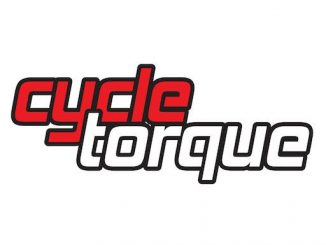FROM a tin shed in suburban Newcastle to the banked arena of the Daytona road racing circuit, Team Catavolt is pushing the boundaries of not only technology, but the acceptance of electric motorcycles.
You get the impression that Jon Eggenhuizen has dreamed of this day for a number of years, and as he prepares to fly to America to take on the world’s best electric powered motorcycles on the race track you might think that this is the final act in the play.
Far from it though, Jon has bigger ideas, and is committed to seeing them to fruition. “I’m an electrical engineer, and back in 2003 I built my first bike using a Honda V750. The technology wasn’t much back then, I used a DC motor and some lead acid batteries. I commuted on it and it’s got a range of 35 kilometres. It’s chain driven, has a top speed of around 180 km/h and does the quarter mile in 14 seconds. It uses a golf cart motor, and it’s still registered today,” said Jon.
The desire to go faster and prove the power of electricity spurred Jon to continue the development of his ideas. “After that the idea emerged to attempt the land speed record, and that’s how the name came up. Catavolt, a bit of a play on Catapult.
We took it to lake Gairdner in 2007 but the event was called off so we had to truck it back which was disappointing, and then in 2009 we went back.
On the first timed run we blew up the motor. In 2010 we again had a go and reached an average of 177 km/h, but we actually peaked at over 200 km/h. That record still stands today.
It was a world record at the time, and is still an Australian record.” To go faster required more power and more investment in time and money. “We decided to go for the 200 mp/h record so I built another bike using the Dailim frame and a 150 k/W motor. The Lake Gairdner speed trials were again cancelled due to rain so we had a bike but nowhere to run it. We then heard about the TTXGP electric road racing championships in Australia, so we put the standard swingarm back in the bike and put a hub motor in. We raced it for two years and won the Australian Championship each year. They say racing improves the breed and this has been the case for Team Catavolt.”
When we first raced the bike at Wakefield Park we were a bit disappointed with the lap times, at 1m 30s. Over the year we dropped that down to 1m 19s, and now we are down to 1m14s, which compares well with many combustion engine race bikes.
The Dailim isn’t what you’d call a sports bike, but we are still quicker than our competition who use Yamaha R1 frames and the like. Along the way the design of the machines changed to make production easier. “We now use a hub motor in the rear wheel.
They are designed in America, and we lace it up to a wheel here. You simply pull out the old wheel, put the new one in and bolt up a small torque arm. Then you are ready to go. Of course the engine is removed and the battery pack sits where the engine used to be.” It’s one thing to race the bikes on Australian tracks with limited competition but shipping the bike to Daytona is an altogether bigger project.
“They call it Biketober fest, and the electric race is for the top four machines from the European, American and Australian championships. It hasn’t been easy to raise the money but we feel it’s necessary for us to go. We have had lots of support and even the local MP has helped us out of his own pocket.
“We want to go to the Isle Of Man next year if possible to compete in the Electric TT, to take our own technology and try and compete with these American teams like MotoCzysz. We want to convert a Honda Fireblade and we’d like to have our regular rider Jason Morris ride the bike there. He’s been a great help with developing the bike and he really understands the electric drive and how to race it.
Plus he’s a local guy so that’s great. The MotoCzysz turns the power down so it can last the whole race on the Isle Of Man, but we can use full power the whole race and let Jason manage it.
If he needs more speed on a certain section then he can use it. Racing is great fun but it’s hard to make money from it. Jon plans to build customer electric powered road machines, in the short term using the Dailim rolling chassis.
“The little Dailim is a nice looking bike, and it’s designed for commuting. You plug it into any 10 amp power point and in 3-4 hours you are ready to go another 150 kilometres.
“The commuter version has a constant 300 Nm of torque through the whole rev range, so it’s like being in the powerband all the time (the race bike has over 500 Nm of torque) . It weighs between 165-170 kilos depending on what features you get on the bike, so it’s got a good power to weight ratio.
“I’ve quit my job and this is what I want to do full time.” Look out for a test of the road registered Catavolt commuter in an upcoming issue of Cycle Torque.



Be the first to comment